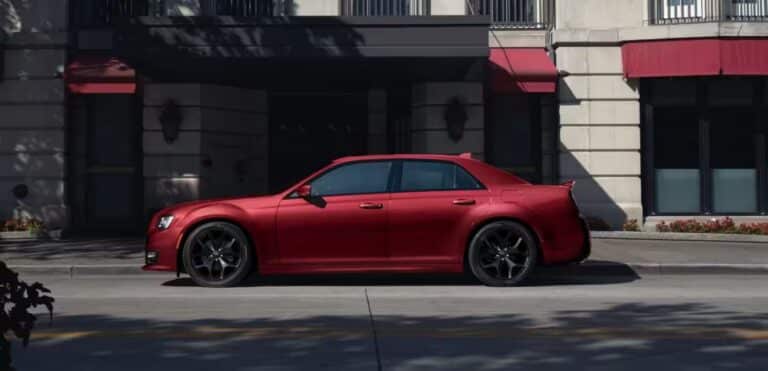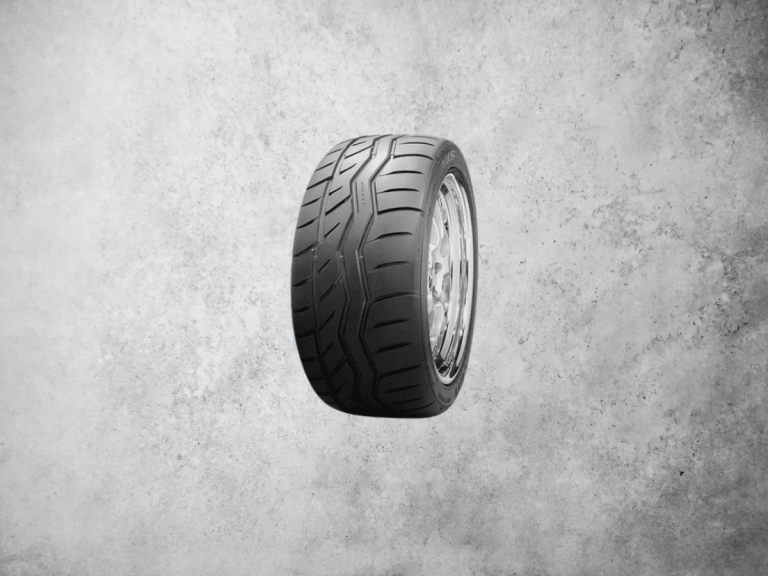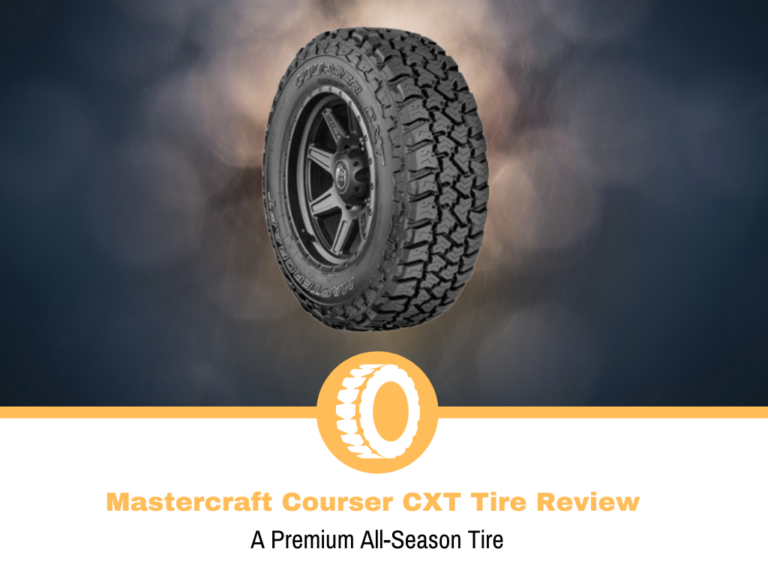Fullway Tires Review: Not My First Choise
For a long time, the tire market was dominated by many of the premium and mid-range brands that we know and love today. As the technology improved, many other companies began to get on board, leading us to a point where we have more brands to choose from than ever before.
Having this many options can be a double-edged sword. Sure, it’s nice to have more of them to choose from, but with so many, how can you tell which is good and which isn’t? In recent decades, we’ve seen the rise of many cheap brands on the market, like the one I’ll be talking about today.
Fullway is a brand that not many people have heard of. The company has been around since the early 2000s in Qingdao, China. It’s part of the Qingdao Fullrun Tire and Rubber Company, which makes tires for many vehicles, ranging from hatchbacks to heavy-duty trucks. Fullway is just one of the brands under this corporation, so you won’t find all types of tires here.
Being a relatively new company, it would be interesting to see how well the tires perform. I wouldn’t expect them to be on the same level as something from the Michelin lineup, but as long as they justify the price point, I may even recommend the brand.
One thing I have to mention is that if you go over to the company’s website, you’ll find only 3 models, which are the active ones. The older models are still up for sale, so I’ll cover those as well.
Fullway Tires Review
Here are the best Fullway tires currently on the market:
#1. HP108
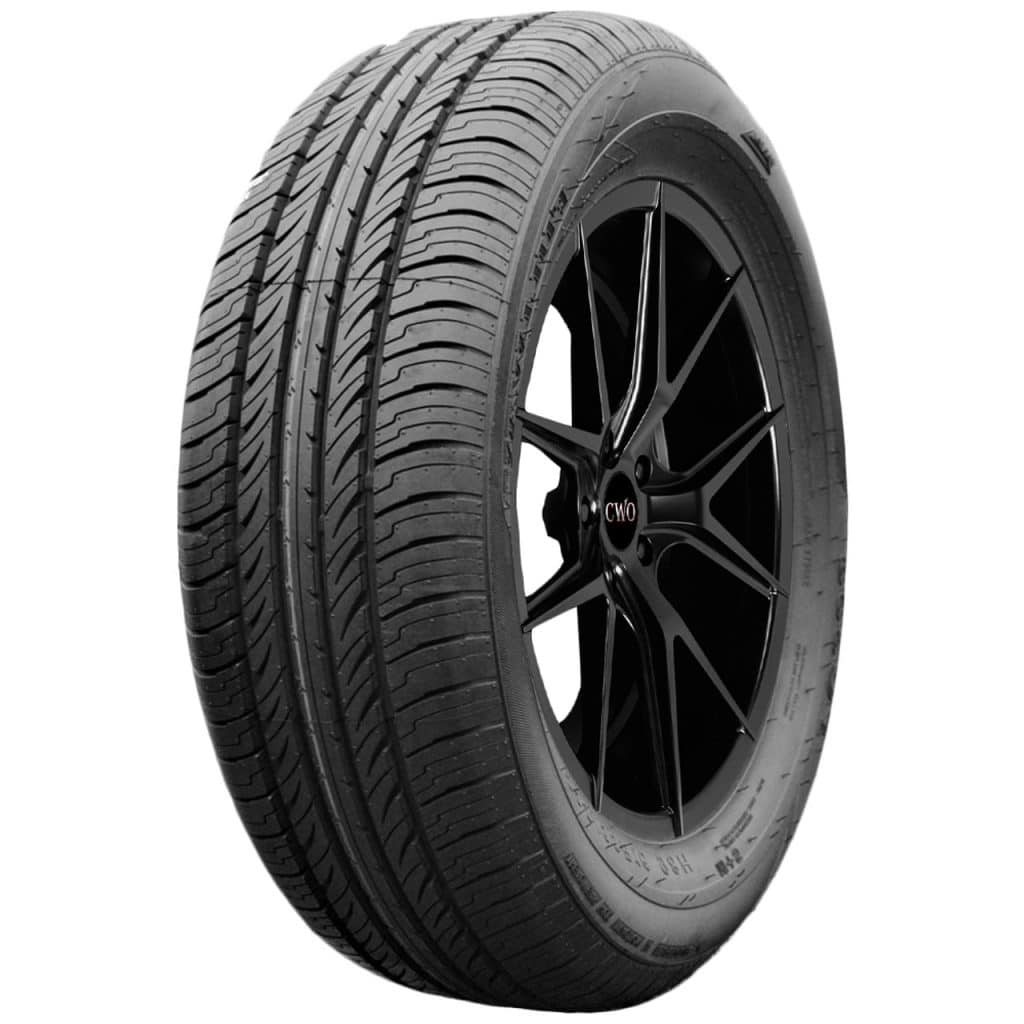
Don't know the correct size tire to purchase? Start here!
One of the most popular options from Fullway is the HP108. It’s an all-season performance tire designed for sporty cars but comes in sizes suitable for passenger cars, CUVs, and SUVs.
The tire is designed with an all-season rubber compound molded into an asymmetric pattern, which should help in various conditions. This should also help with the handling, which is where the performance tag comes from. For harsh rain, the circumferential and lateral grooves are designed to channel water and keep the tire planted at higher speeds. The design also helps channel the airwaves, meaning the tire should provide a quiet ride.
In dry conditions, the HP108 does a solid job. It delivers usable levels of grip and traction, which should be fine for most people driving around town or on the highway. Pushing the tire isn’t something you’ll have much fun with because the levels aren’t very high. The braking distances are acceptable but far from the shortest in this category. Things take a slight turn for the worse in wet conditions. The traction isn’t the best on damp roads, and you’ll notice the tire slipping a bit more than you’d like, especially if you’re a spirited driver. With this, you also get slightly longer braking distances, barely in the safe mark. One positive side is the aquaplaning resistance, which holds the tire stable even at highway speeds.
As an all-season tire, the HP108 should offer some decent snow performance, right? Unfortunately, no. Even in lighter conditions, the tire will struggle with traction, making it a poor choice. The most you’ll be able to get is barely acceptable traction on unpacked snow, as long as you don’t need to brake too much because the distances are long.
Even though we’re talking about a performance model, the HP108 doesn’t perform poorly in terms of refinement. As a cheap tire, the noise levels are acceptable, even when driving at highway speeds. Again, it’s not a highway tire from a premium brand, so you’ll need to set your expectations right. The comfort levels are solid enough, and the tire absorbs a good amount of bumps and road imperfections. It may feel bouncy in some situations, but it’s not a massive issue.
The HP108 is advertised as a performance tire, but the handling makes it seem like it’s not. The softer nature does a good job for comfort but ruins the handling. It’s far from the most responsive tire I’ve driven, and with the limited traction, you wouldn’t be pushing it hard.
Pros
- Wide range of sizes
- Acceptable noise levels
- Solid dry performance
Cons
- Poor winter performance
- It doesn’t handle like a performance model should
#2. HP208
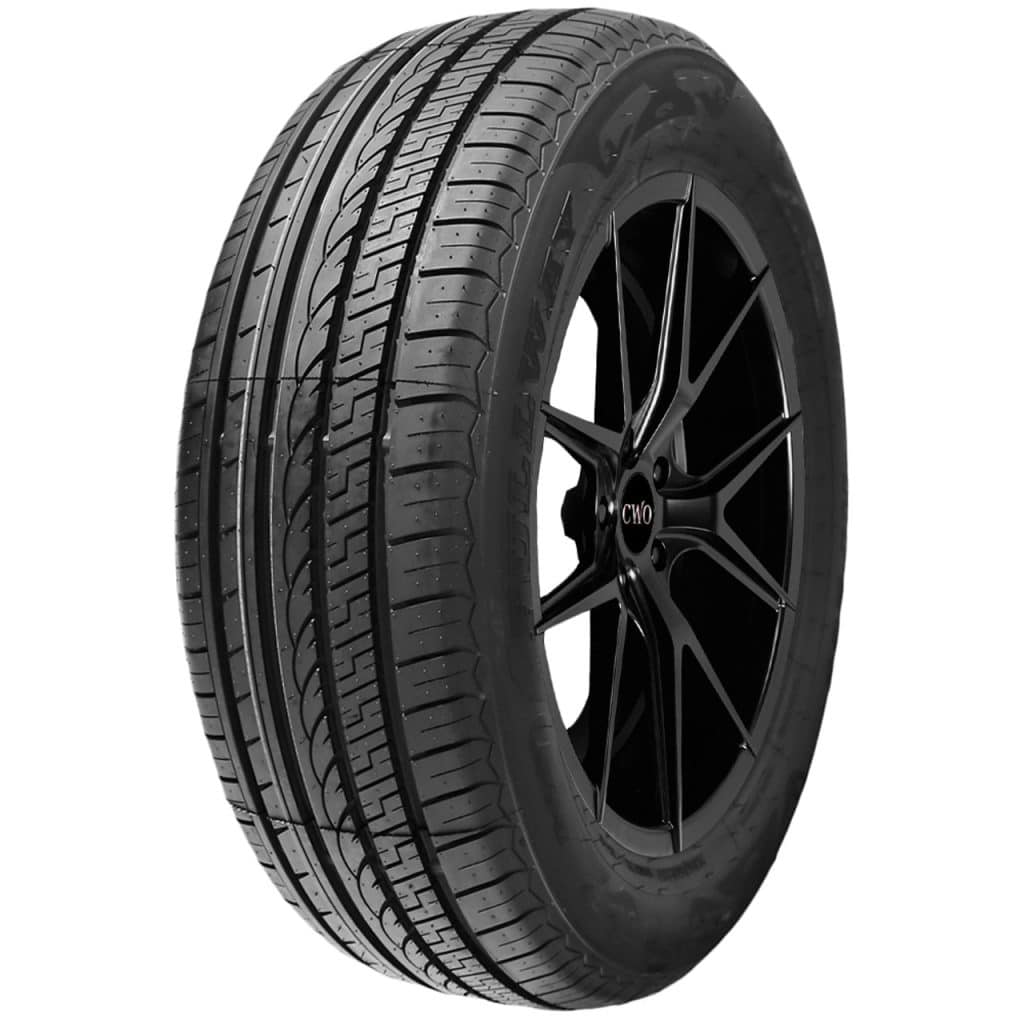
Don't know the correct size tire to purchase? Start here!
Next up, we have the HP208, which comes as an upgrade over the HP108. This means that we’re looking at an all-season performance tire, but let’s take a look and see if there are any improvements.
Similar to the previous model, you’re looking at a tire with an asymmetric tread pattern from an all-season rubber compound. The design features a flat footprint designed to help with stability and handling. You have additional sipes on the outer shoulder that should help with cornering. Regarding the noise levels, the multi-pitch variation should help cancel out some of the road noise.
The upgrade on paper is noticeable on the road. With the HP208, the performance bump in dry conditions isn’t massive, but you have a bit more to play with. The traction levels are higher, and you can push it a bit more than the previous one before it loses grip. There is also a slight improvement in the braking distances, so that’s a plus. The biggest improvement is in wet conditions. Even though I wouldn’t compare it with the high-end products, the tire feels more planted on damp roads. The traction and grip levels are decent, and the braking distances are better. Similar to the older tire, you’re getting solid aquaplaning resistance.
Unfortunately, things don’t improve as much in the winter department. The HP208 is maybe a bit better on snow, but it’s still behind some of its rivals. You may be able to use it in lighter conditions, but you’ll still need to be cautious of your inputs. The braking distances aren’t massively improved, so don’t expect any winter wonders with this tire.
The HP208 delivers decent refinement levels, making it seem more like a touring tire. You get a decently comfortable ride without too many shocks or vibrations. Larger potholes aren’t ideal, and the initial jolt is a bit harsher than I’d like. The noise levels are decently low, and the tire isn’t loud around town. You’ll notice a hum on the highway, but it’s not terrible.
Similar to the previous model, the handling isn’t the sportiest of the bunch. The HP208 gets an increase in responsiveness, but I wouldn’t exactly classify it as excellent. One noticeable difference is the feedback, which is more pronounced.
Pros
- Improved feedback over the previous model
- Acceptable wet performance
- Solidly refined
Cons
- Snow performance remains poor
- It doesn’t feel as sporty as it should
#3. HS266
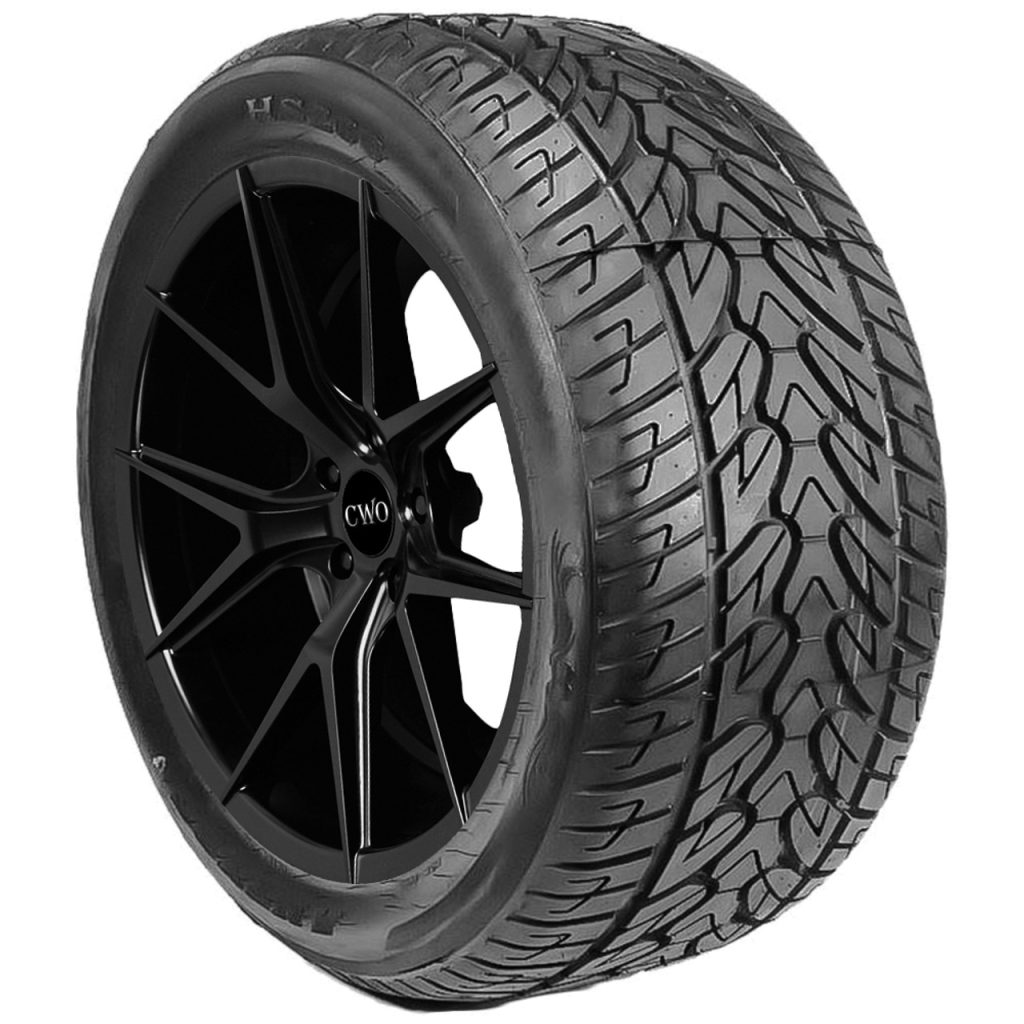
Don't know the correct size tire to purchase? Start here!
Moving away from the passenger cars, we have a tire for larger vehicles. The HS266 is an all-season performance tire designed for SUVs and light trucks or, in some cases CUVs.
The HS266 features a directional pattern with a continuous central rib. This should help the tire evacuate water more efficiently and provide excellent aquaplaning resistance. The central rib is responsible for handling and stability, which this tire should be able to deliver. Fullway went with an all-season compound for the rubber, meaning we should see some usable performance in light snow conditions.
Driving in dry conditions with the HS266 is a solid experience. The tire can deliver surprisingly good levels of grip and traction, meaning it’s suitable for normal driving, and you can push it a bit. It’s not on the same levels as the UHP tires we usually mention, but it’s not the worst choice for the price. In addition to that, the braking levels are decently short, so it’s safe enough. Wet performance is also pretty good. The sipes do a decent job on damp roads, and you’ll get enough traction to eliminate slip. As for the braking distances, again, they are decent but far from the best. The directional pattern does an excellent job at evacuating water, so the aquaplaning resistance is pretty good.
Similar to the previous two models, the winter performance isn’t the best. The HS266 is acceptable enough on unpacked snow as long as it’s very shallow. Packed snow can be a struggle, and the tire becomes almost useless in deeper patches.
As for the refinement, the HS266 has a dual personality. The comfort levels are decent, and the tire deals with bumps well. It can smooth out some of the imperfections and will smooth out bigger bumps. Noise levels, on the other hand, aren’t as impressive. It’s acceptable around town but a bit noisy when driving on the highway.
The handling is okay if we’re talking about a touring tire. Since the HS266 is a performance one, I wouldn’t call the handling the best. There is some feedback, but it’s not a lot. As for the responsiveness, it doesn’t come close to some grand touring models.
Pros
- Comfortable
- Good dry performance
- The aquaplaning resistance is above average in its class
Cons
- Only usable on light and unpacked snow
- Nosy at highway speeds
#4. HS288
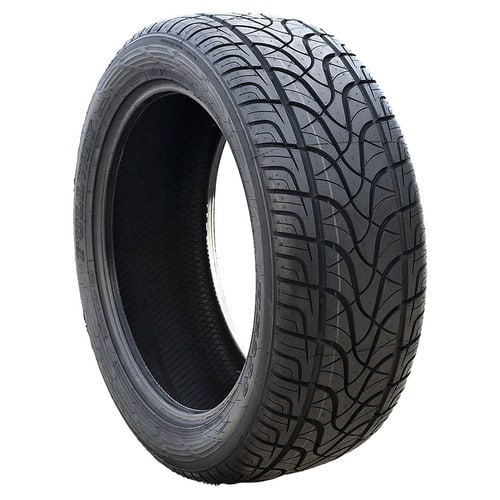
Don't know the correct size tire to purchase? Start here!
Like the first two models, the HS288 comes as an upgrade over the HS266. It means we’re looking at an all-season performance tire that comes in sizes for larger vehicles like SUVs or light trucks.
As an all-season tire, the HS288 features an all-season rubber compound that should be capable of delivering performance in less-than-ideal conditions, like light snow. The tread pattern is designed to help with water channeling, meaning we should see some solid aquaplaning resistance. Fullway aimed to maximize the contact area to ensure a longer lifespan and reduce noise levels. This should also help with traction in various situations.
The HS288 is a performance-oriented tire, and it delivers that in dry conditions. You have some traction to play around with, meaning it’s enough for everyday driving and pushing it a bit. To be honest, there isn’t a lot of headroom, so enthusiasts won’t be overly thrilled with the performance. The tire manages to deliver solid performance in wet conditions. You’ll have decent traction on damp surfaces, so it won’t be terrible. A slight downside is that it becomes a bit twitchy at higher speeds and doesn’t feel as plated. On a positive note, the aquaplaning resistance is excellent, and the tire evacuates water very well.
There is a trend with Fullway tires so far, and that’s poor winter performance. The HS288 is relatively okay in colder weather and slush, but it’s not the best choice for everything else. It will be barely acceptable even in shallow snow and will struggle a lot more over packed or deep snow.
In terms of refinement, the HS288 does a solid job. There is some sacrifice in terms of the comfort levels, which aren’t the best, but it’s livable. The tire mutes some vibrations, but it’s behind even some mid-range models from this class. Noise is improved over the previous model, but the tire is still a bit audible at highway speeds.
The handling is acceptable but not exactly performance-like. You’ll have a decently responsive tire with a solid amount of feedback which isn’t bad. The problem is that, like the previous model, there are touring options that seem to do a better job.
Pros
- Good dry performance
- Excellent aquaplaning resistance
- Solid comfort levels
Cons
- Noise levels aren’t particularly low
- Not the most usable tire for winter conditions
#5. PC368
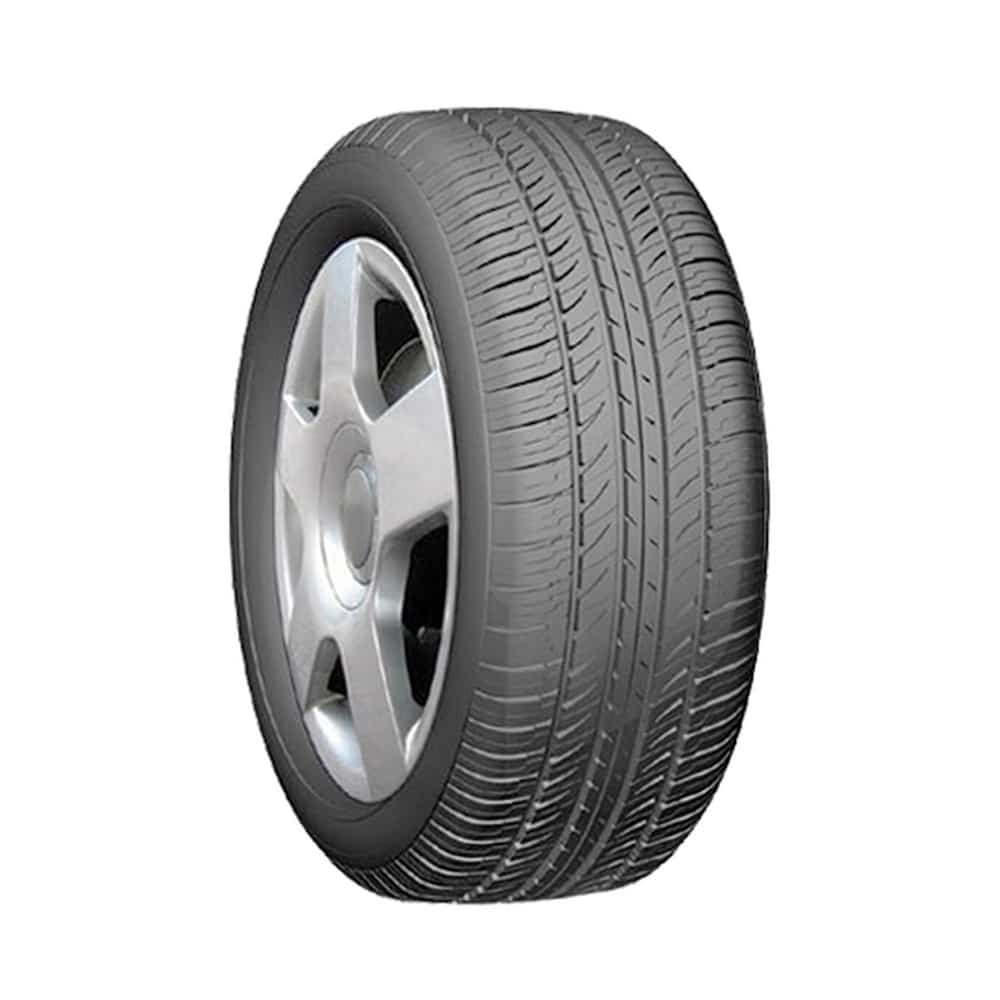
Don't know the correct size tire to purchase? Start here!
Now we’re returning to a model that covers multiple vehicle types like the first two. The PC368 is advertised as an all-season performance tire for hatchbacks, sedans, CUVs, and SUVs. Depending on the size in question, maybe some light trucks.
Like the rest of the lineup, we’re looking at an all-season tire courtesy of Fullway’s all-season rubber compound. Unlike the previous models I mentioned, this one features a symmetric pattern, meaning we should see some solid stability and a smooth driving experience. The pattern also features large circumferential grooves that aim to evacuate water and offer excellent aquaplaning resistance.
In dry conditions, the PC368 delivers usable performance, considering the price point. The traction and grip levels are okay for most people as long as they don’t drive too aggressively. You won’t get particularly high limits, so don’t expect to be able to push it hard. Wet is where the tire starts to fall apart. You’ll notice a bit more slip on a damp road, especially when accelerating. This happens even when you’re not overly aggressive, and you’ll notice a bit more understeer in the corners. A positive side is that the aquaplaning resistance is pretty good, and the tire remains stable even on the highway.
Despite being an all-season model, the winter performance is as limited as the rest of the tires. You’ll barely get any usable traction in the lightest conditions, and that’s as much as you should expect. With the longer braking distances, the PC368 wouldn’t be my first choice for these conditions.
The refinement is a bit of a mixed bag. On the one hand, you have surprisingly high comfort levels. The PC368 deals with bumps solidly well, softening them and minimizing vibrations. You may feel a bit of bounciness, but it’s not too terrible. On the other hand, the noise levels could use a bit more work. It’s not horrible around town, and other noises usually drown out the faint hum. With that said, on the highway, it can get a bit annoying, especially over rougher surfaces.
Handling is something that the PC368 doesn’t do so well. The softer nature of the tire does an excellent job regarding comfort levels, but it ruins the driving experience. You’ll get a lot more flex in the sidewall, and with the responsiveness, you’ll feel like you’re driving a mid-range winter tire. You won’t rely on the feedback, so I wouldn’t classify this as a performance tire.
Pros
- Decent dry performance
- Very good aquaplaning resistance
- Comfortable
Cons
- The handling doesn’t feel like on a performance tire
- Not a lot of traction on damp roads
#6. PC369

Don't know the correct size tire to purchase? Start here!
You’d think the PC369 would be an upgrade over the previous tire, and you’d be half right. It is an upgrade, but as part of that, the range of applicable vehicles is reduced. As a result, this is a tire mainly for passenger vehicles, like hatchbacks, sedans, or coupes.
Similar to the previous model, it’s designed with an all-season rubber compound, meaning we should hopefully see some winter performance. To aid in that, the symmetric pattern is a bit more aggressive with extra sipes, which should help improve traction in slippery conditions. For harsh rain, the tire has wide circumferential and lateral grooves, which should help it evacuate water efficiently.
In terms of dry performance, the PC369 does a solid job. There is enough traction for normal driving and maybe to push it a bit, as long as you don’t get carried away. At a certain point, the tire will slip, or you’ll get some understeer, so it’s not exactly a track-oriented option. There are some wet improvements over the previous model. The traction levels are slightly higher, and the tire feels a bit safer, which is evident from the slightly shorter braking distances. The good news is that the grooves are doing their job, and you’re getting excellent aquaplaning resistance.
Another improvement is in terms of winter performance. I wouldn’t classify the PC369 as a superior tire comparable to a winter model, but it’s slightly better than the previous one. You can use it in the lightest conditions if you’re careful of your inputs. Even on packed snow, there is some acceptable traction, but it’s still behind most of its rivals.
The best part about the PC369 is the refinement. You’re getting a tire with very good comfort levels, which is capable of smoothing out imperfections and bumps. There are some noticeable vibrations with larger potholes, but they’re not the worst I’ve seen. The noise levels are also solid, and you won’t hear too much. Even at highway speeds, the hum is low enough so that it won’t be overly intrusive.
In the handling department, the PC369 suffers from the same drawbacks as the rest. Sure, it’s responsive enough for most people, but not enough to be called a performance model. It’s a similar story with the feedback, you won’t get enough of it to know what the front tires are doing.
Pros
- Solid traction on damp roads
- Pretty good dry performance
- Well refined
Cons
- Winter performance is behind most of its rivals
- Doesn’t handle like a performance tire
Fullway Tires Buying Guide
What is there to like about Fullway tires? What is it that distinguishes these tires from the chasing pack? Are there areas where Fullway tires could or should have done better? Any shortcomings that could potentially be deal-breakers? This section has all the answers.
Why Should You Buy Fullway Tires?
Here’s why Fullway tires should be on your short list of tire brands to buy next:
1. Cheap
Getting a set of tires isn’t the most budget-friendly thing you can do, especially when we’re talking about the premium models. This is where Fullway comes into play with its affordable models. Sure, there may be some cheaper options out there, but with some of those, you’ll start to go into unsafe territory.
2. Acceptable performance
Whenever you get cheap tires, it’s important to be aware of the performance you’ll get. I’ve seen some affordable options that can compare with the premium models, but those fall in the mid-range segment. With Fullway’s tires, you’re getting acceptable performance, which should be fine as long as you’re aware of that. The performance levels aren’t very high, so you’re limited.
3. Wide range of vehicle coverage
Even though Fullway doesn’t offer a plethora of models to choose from, many of those come in a wide range of sizes. As a result, you can fit them on any vehicle, from a small hatchback to a light truck. Remember that not all models have this coverage, so double-check the list of available sizes before deciding which one to get.
Why Should You NOT Buy Fullway Tires?
1. Poor snow performance
All-season tires aren’t a replacement for winter tires, but many of the mid-range and premium models I’ve looked at did well in these conditions. Unfortunately, Fullway’s tires shouldn’t be your first choice because they won’t deliver any usable performance on snow. Even in lighter conditions, the tires struggle for traction and provide longer braking distances.
2. Limited types of tires
The size range is pretty good, but I cannot say the same about the type of tires Fullway offers. Currently, the company only makes all-season tires, meaning that you don’t have any summer or winter models to choose from. In addition to that, off-road enthusiasts will need to look elsewhere because there aren’t any all-terrain or mud-terrain tires either.
3. Not exactly performance models
Fullway advertises its tires as performance models, which require two aspects – good performance and handling. In this case, you’re not getting either of these two. The performance levels aren’t high, and you’re limited with how much you can push the tires. In addition to that, the handling is barely average and more along the lines of a touring or winter tire and not a performance one.
4. No treadwear warranty
You’ll need to make certain compromises whenever you get cheap tires. One of the many you’ll have to make with Fullway is the treadwear warranty. The company doesn’t offer one with all of its models, meaning you don’t have any way to estimate how long they would last.
Frequently Asked Questions
Here are some of the common queries people have about Fullway tires:
Who makes Fullway tires?
Fullway is a brand that falls under the Qingdao Fullrun Tire and Rubber company umbrella and is a company based in Qingdao, China. The parent company has several other brands under its name and has several patents. Unlike other brands that have their own facilities, Fullway relies on its parent company for that.
Where are Fullway tires made?
Considering we’re talking about a Chinese brand, you can probably guess where the tires are made. For the most part, Fullway tires are made in China, but not all of them. Fullrun, the parent company, also has manufacturing facilities in Malaysia, so you may get some models from there.
How long do Fullway tires last?
The biggest issue with the longevity of these tires is the lack of a treadwear warranty. We usually use that to get an estimate of how long they would last, but in this case, we cannot do that. Based on some opinions from people who have driven them for longer, you shouldn’t expect premium-like longevity.
Is Fullway a good brand?
I wouldn’t say good, because the company isn’t on the market for too long and it makes cheap tires. Fullway is an acceptable brand if you know what you’re getting into. The tires come with many compromises, which is the main reason why I cannot categorize the company as good.
Are Fullway tires noisy?
One of the few positive sides of Fullway tires is that they aren’t particularly noisy. I wouldn’t start to compare them with the premium counterparts, but considering how cheap they are, I’d say they do a solid job. Keep in mind that some are quieter than others, meaning that not all models are created equally.
Are Fullway tires good for snow?
One of the biggest downsides to Fullway tires is the snow performance. Even though all-season tires aren’t designed for that, most rivals do an acceptable or sometimes excellent job in lighter conditions. These tires, on the other hand, do a barely acceptable job, and I’d categorize them as unsafe for these conditions.
Conclusion
Talking about tire manufacturers that offer cheap tires usually makes me not recommend them. I wish I could say something differently about Fullway, but unfortunately, that’s not the case.
Yes, the tires do a solid enough job for the money in some conditions, and that’s the only thing you can rely on. The dry performance is usually fine, along with the refinement levels. For the rest, it depends on the model in question, but wet and snow performance aren’t something that these tires can brag about.
As a package, the Fullway tires are models I’d recommend avoiding if possible. I can understand that you may be on a very tight budget, a which point you can go for them, but be aware that you’re getting a tire that won’t perform exceptionally well.

